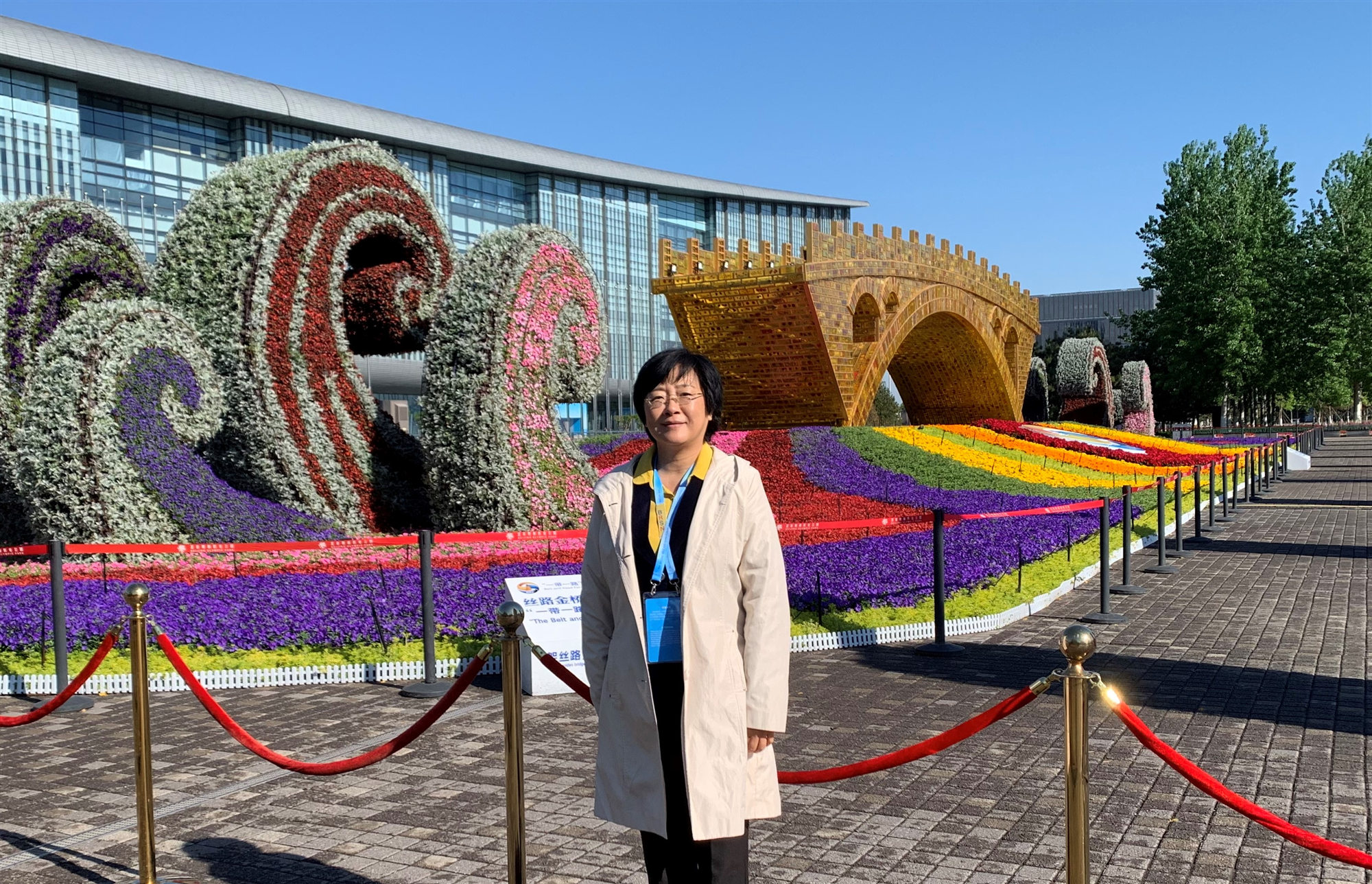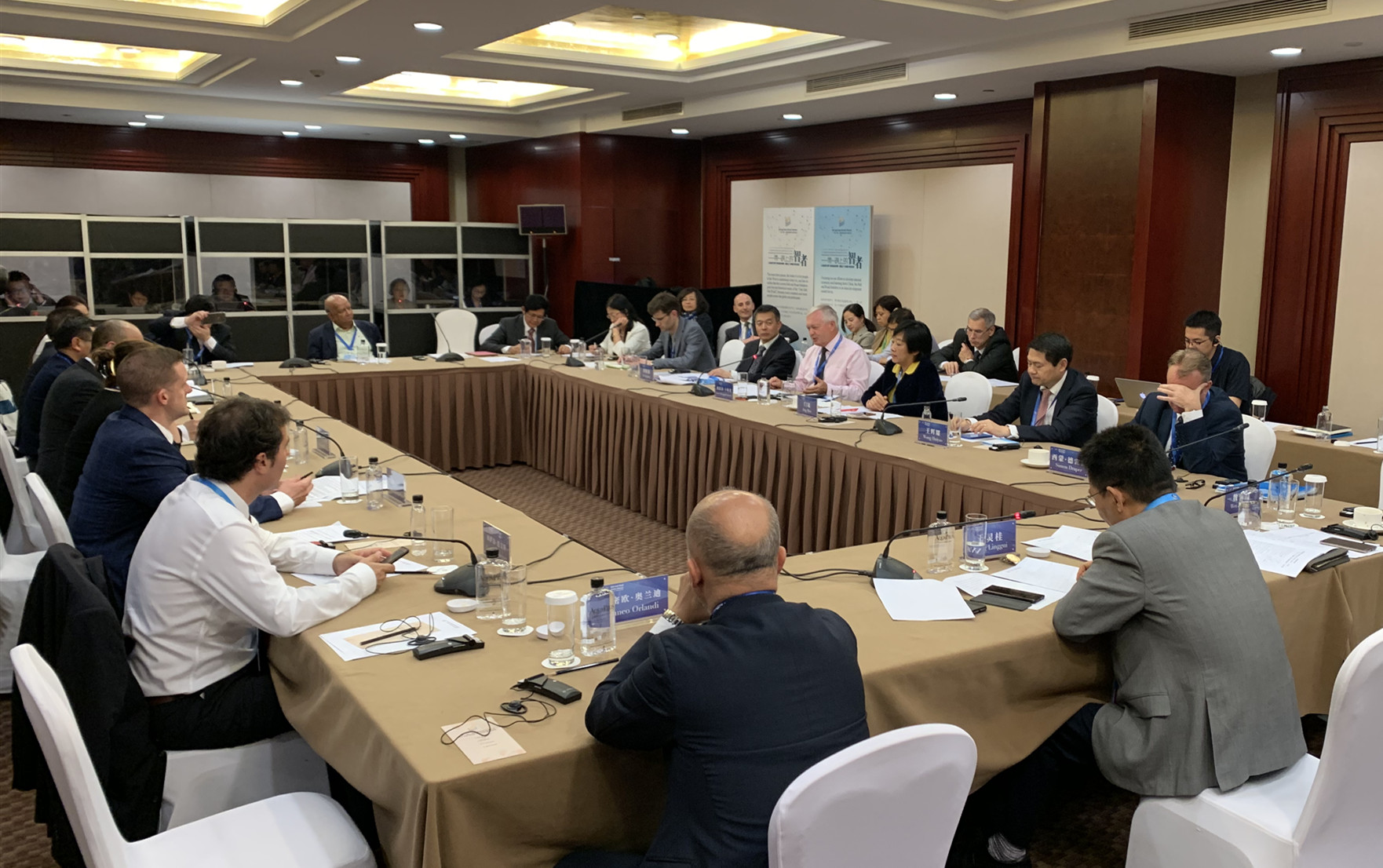
On April 25th, Professor Jing MEN, Senior Researcher of Taihe Institute, attended the Belt and Road Forum – Thematic Forum on Think-Tank Exchanges and gave a keynote speech. Below is her speech words.
The EU is a very important partner for China, not only in economic and trade relations, but also in global governance. The Belt and Road Initiative (BRI) promotes five connectivities, including policy, infrastructure, trade, finance, and people-to-people. Since 2015, China and the EU have talked about establishing a connectivity platform and have been working closely together to select the first group of infrastructure projects from both sides that can benefit mutually. In September 2018, the EU published its own connectivity strategy – Connecting Europe and Asia - Building blocks for an EU Strategy –demonstrating its own vision to improve connections between Europe and Asia, through interoperable transport, energy and digital networks, as well as people-to-people connections.
To a large degree, the envisaged connectivities by China go well with those designed by the EU. Most noticeably, both sides attach great importance to transport infrastructure projects and people-to-people exchanges. During his visit to China in November 2018, Mr. Neven Mimica, European Commissioner for International Cooperation and Development, reconfirmed the EU’s interest in cooperation with China on connecting Europe and Asia. In December 2018, China published its latest policy paper on the EU, which pledges to seek synergies between the BRI and the EU development plans including the EU’s connectivity strategy. In the most recent policy paper on China published on 12 March this year – EU-China: a Strategic Outlook – it states that
The EU-China Connectivity Platform represents an initial opportunity to strengthen cooperation and work in reciprocal and transparent ways, and should be expanded. It aims at promoting sustainable transport corridors based on the principles of the Trans-European Transport networks policy. The imminent launch of a study on railway corridors, between the EU and China, exemplifies the possibility of creating synergies with Trans-European Transport network policy.
All the documents mentioned above demonstrate clearly that China and the EU share common interests in developing cooperation in those fields of connectivities. As a matter of fact, China and the EU are indeed indispensable partners. But to realise their common interests needs joint efforts from both sides.
To facilitate cooperation, the EU and China should build mutual trust between each other. In the EU’s most recent China policy paper, although the EU emphasises that China is an important partner, it states, for the first time, that China is a “systemic rival”. In recent two to three years, there was a growing agitation in the EU that China has become a challenge, or even a threat. Several European leaders, including Tusk and Macron, addressed China as threat/challenge. As China is climbing up the global value chain and China's economy has become the second largest in the world, there is, no doubt, growing competition between China and the EU. There is also a strong request in the EU that it should speak with one voice to China. For the moment, the EU is somehow in the dilemma that it wants to harvest the material interests in cooperation with China but tries hard to defend China’s influence. The EU should make clear to itself what it expects from the relationship with China. China and the EU are important partners. A clear definition of the nature of the relationship is essential for the construction of China-EU mutual understanding and trust. Cooperation should remain to be the major theme in bilateral partnership. Only via cooperation and constructive dialogue can the EU’s interests be facilitated.
In order to push forward bilateral cooperation, China and the EU should establish a dialogue on connectivity, apart from the existing 60 dialogues on different issues. Within the framework of this dialogue, with the purpose of pursuing common interests and addressing mutual concerns, the two sides should exchange their views on how to develop sustainable connectivity projects in transport, infrastructure and digital fields, explore the possibility of jointly undertaking a selected number of projects, giving fully play to their respective advantage. Their cooperation may not only be developed in China and in the EU, but also in the third countries that are connecting between China and the EU, as well as in other Asian regions and Africa.
While Eurasian connectivity is a great initiative that will benefit the regions and the people on the huge Eurasian continent, it will take decades to be realised. Both are aware that the implementation of connectivities not only needs a huge amount of investment, but also clearly designed an action plan. On top of that, a set of internationally accepted rules are indispensable for the success of the fulfilment of the objectives. Both China and the EU play an important role in pushing Eurasian connectivities. The cooperation should follow the principles of openness and transparency, taking into consideration of local situation and its specific social and cultural environment, based on equal partnership, which will bring mutual benefit to China and the EU.
At the centre of Eurasian connectivity is communication and exchange between the people on the huge continent. Whether China and the EU are able to promote connectivities successfully or not will, to a large degree, depend on people-to-people connection. Therefore, the focus of bilateral cooperation should be on those projects that will bring people together, for training, for education, for exchange of information, and for mutual understanding. A wide cooperation network and mechanisms of exchange of visits between education and research institutions, think tanks, social organisations, all the relevant industrial associations and enterprises should be established and developed, based on which, joint activities including conferences and seminars, exhibitions, and research and development should be stimulated to maximise joint efforts on fulfilling the objectives of connectivities.
Last but not least, as the EU is a regional organisation which has 28 member states, China’s cooperation with the EU also covers cooperation with its member states. The EU should try its best to coordinate the position of its member states whereas China should take into consideration of the special feature of the EU and its complicated decision-making system. For China, more experts on China-EU relations are needed who are useful in assisting Chinese initiatives to be understood in the EU. In the meantime, as the EU’s importance in facilitating connectivities is far more important than that of the United States and any other players in the world, China may consider to upgrade its relationship with the EU to be at the same level as the US in its external relations.
All in all, sitting on the two ends of the Eurasian continent, China and the EU, intertwined through mutual-beneficial cooperation on the connectivity initiative, form the community of destiny. Through extensive dialogue, actively developed exchanges and communication, as well as sustainable development projects, I believe that China-EU relationship will be geared towards a long-lasting, fruitful and productive partnership.

—————————————————————
FOCUS ON CONTEMPORARY NEEDS.
Should you have any questions, please contact us at public@taiheglobal.org